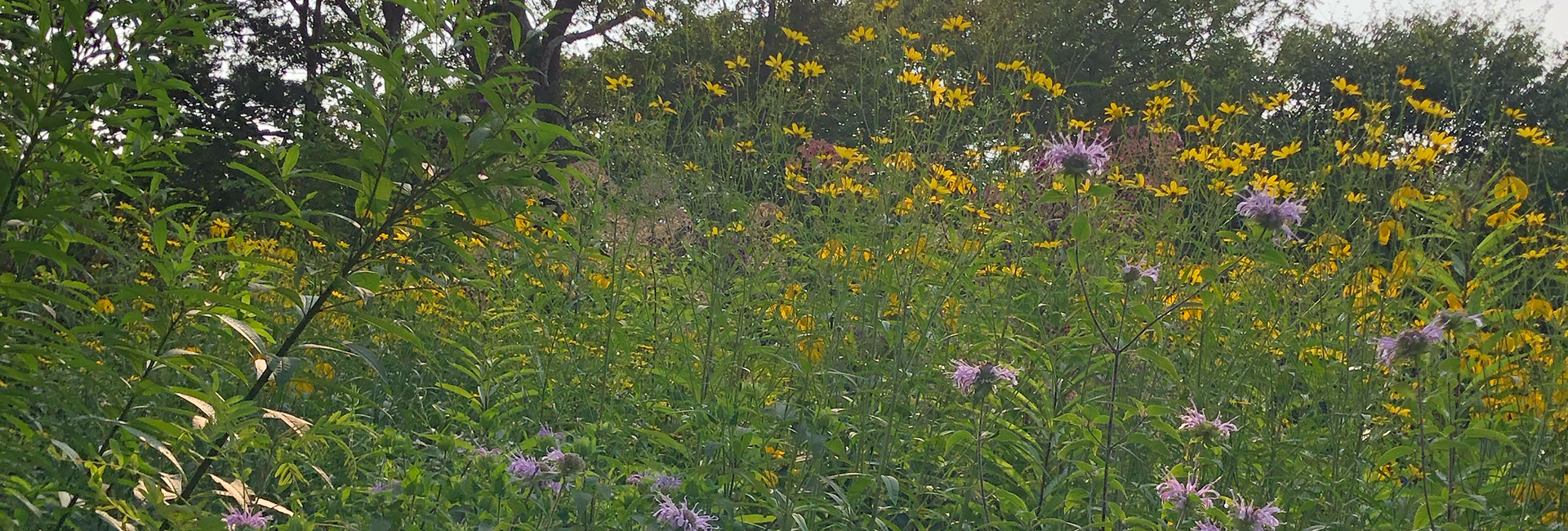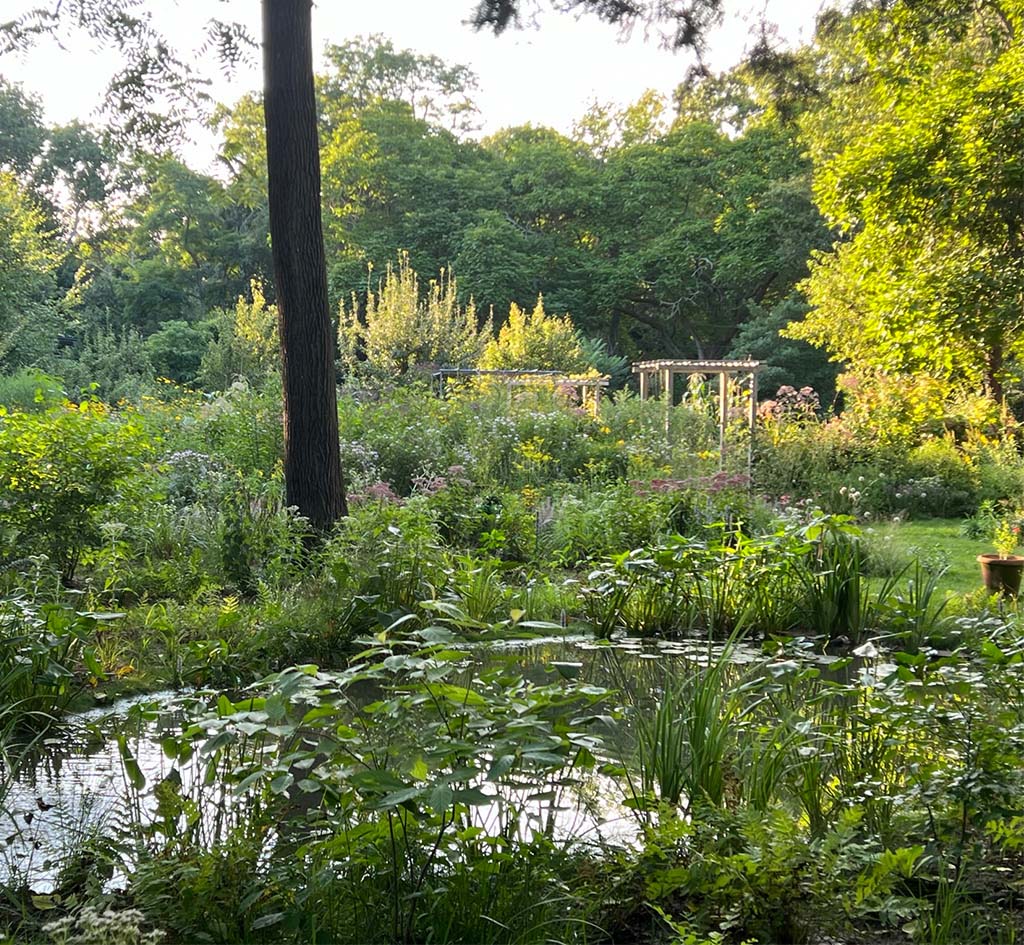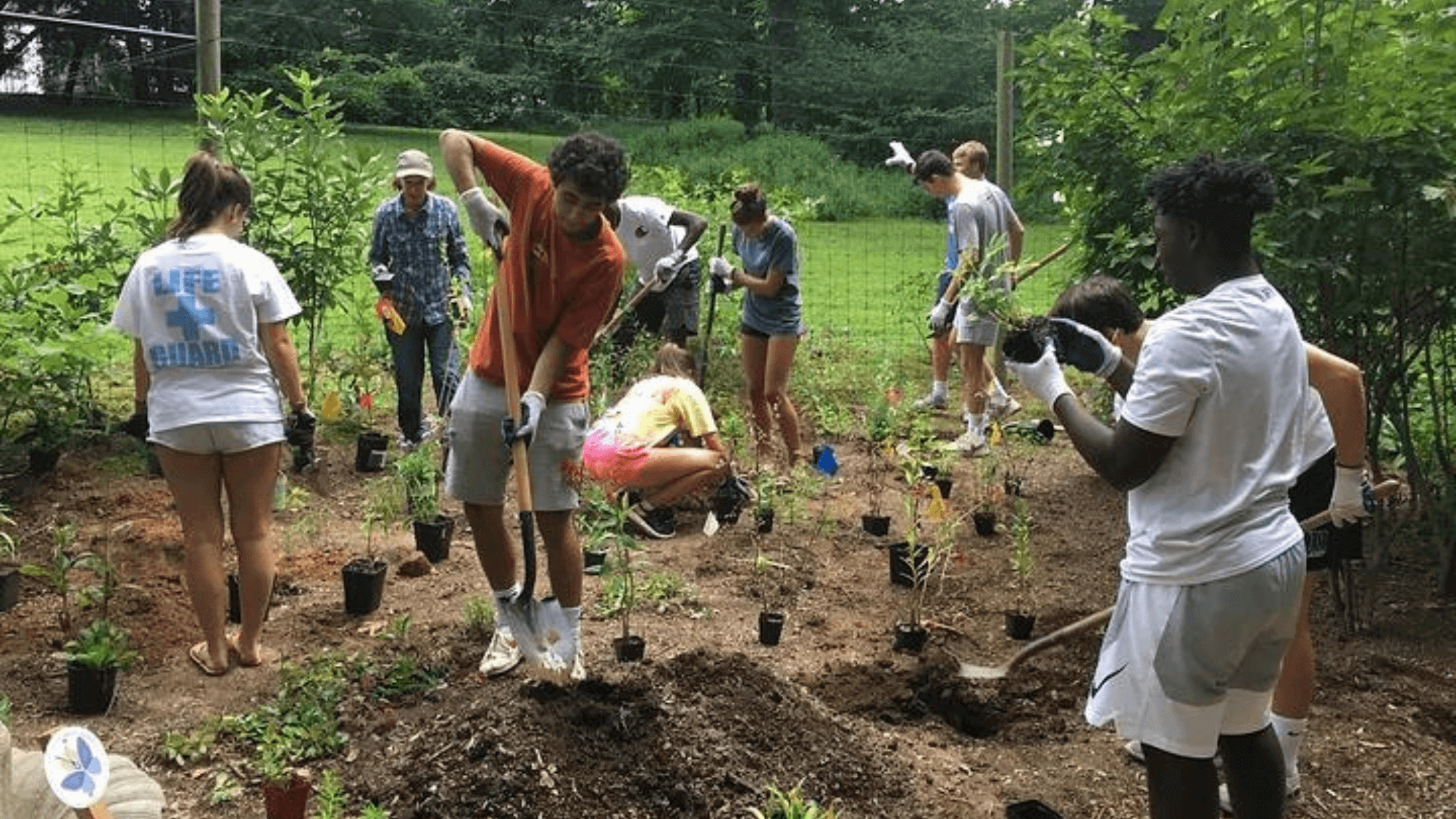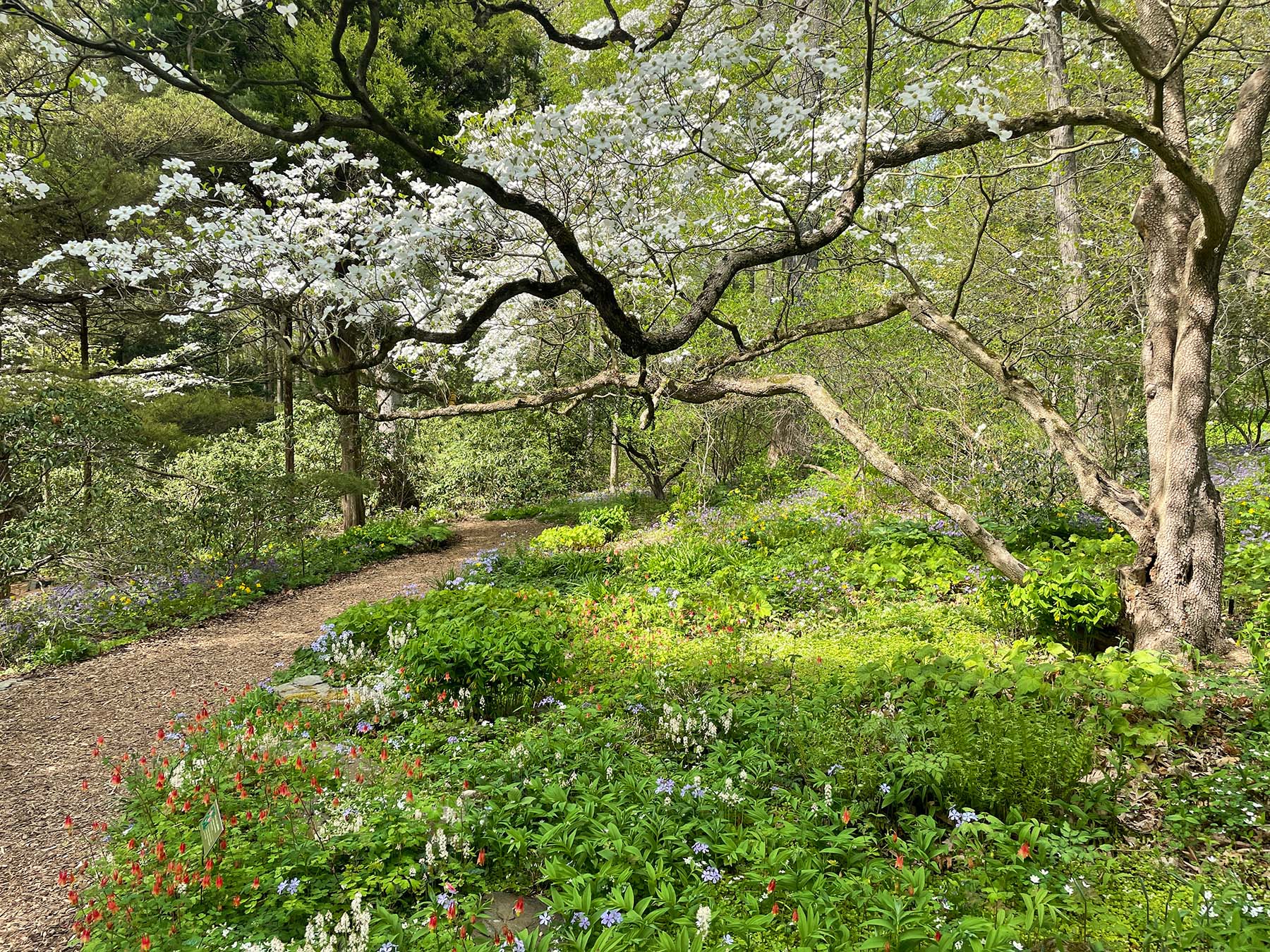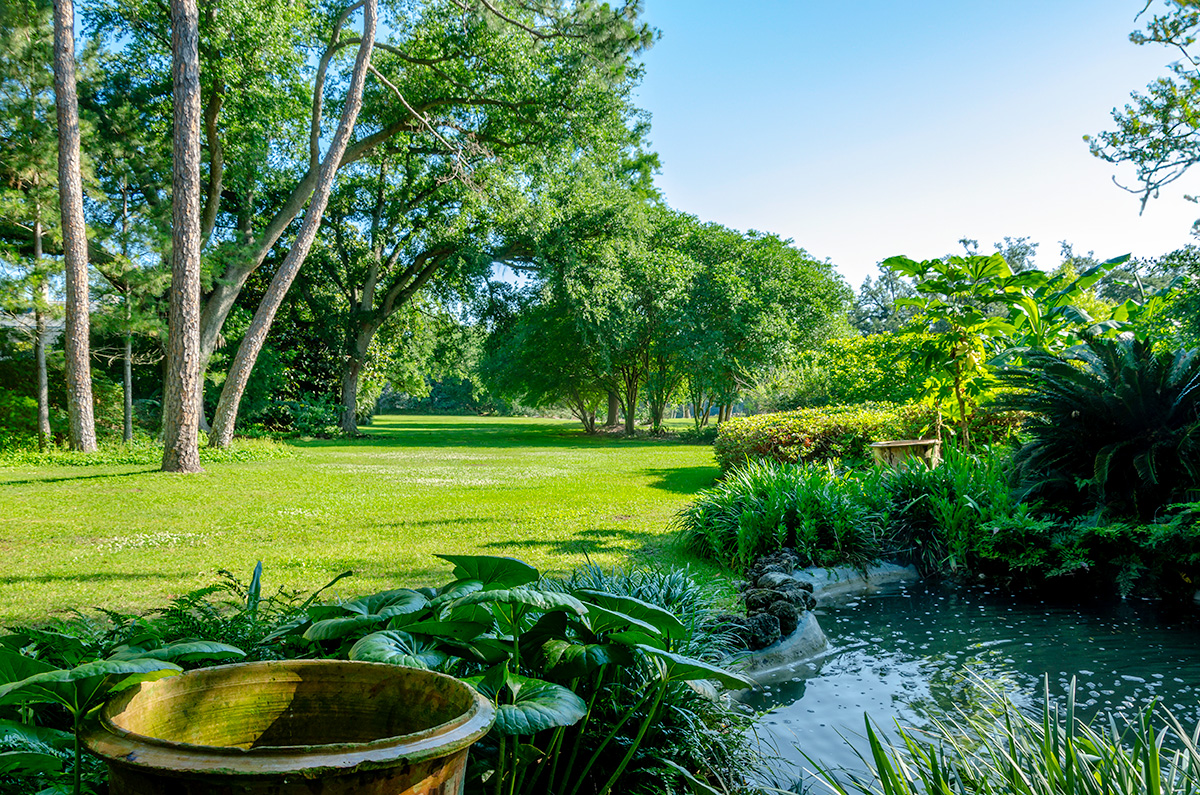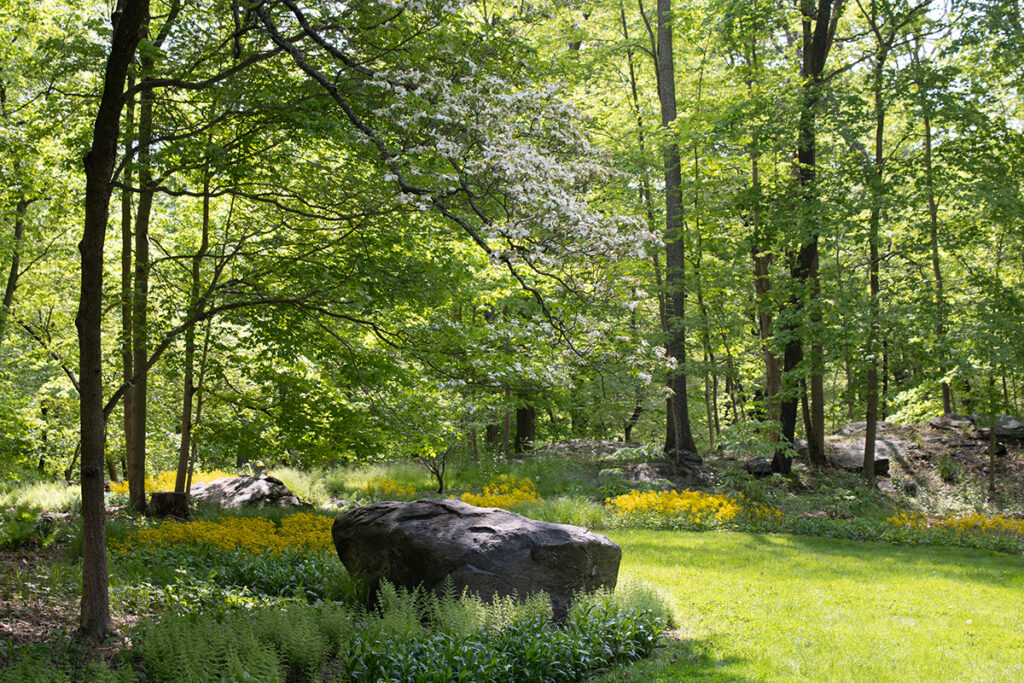
“A garden needs a heartbeat,” said Leslie Needham, founder of her eponymous design firm in Bedford, NY. And Needham will be the first to admit that her former English-style garden—tightly clipped hedges, filled with plants originating from around the world—didn’t have quite one. “It was pretty stagnant,” she says. But when she looked down at the Mianus River Gorge, a protected stretch of land filled with native plants that abuts her property, she saw a flourish of birds, animals, insects. It thrummed with activity—It had a heartbeat.
Working with Andrea Spunberg, a senior designer at her firm, who was also one of Needham’s first landscape design students when she taught at the New York Botanical Garden, she began incorporating native plants into existing beds, converting areas of lawn into meadow, and letting plants grow more freely and openly. Soon phloxes and asters courted butterflies and bees. Shrubs like bayberry and Fothergilla provided shelter for wildlife. And grasses and sedges, like little bluestem and carex, offered four season beauty.
Her new design philosophy focuses on “blurring the edges horticulturally to provide a connection, as Doug Tallamy encourages, to the natural landscape around us,” she says. “There’s a comfort that comes when a planting is correct for its environment,” says Needham. “It just feels of a place.” Spunberg agrees, “It feels alive.”
Needham and Spunberg share eight ways to make your garden spring into life.
Photography courtesy of Leslie Needham Design.
Embrace the Vernacular
“Architecturally, I understood how a house needs to fit into its setting. It was built in a certain style for a certain reason to a certain scale,” says Needham. “But then I realized, there’s a vernacular in the landscape too and you get it through native plants. I now think of genius loci: what is the spirit of this place and how do you get it?” For Spunberg, who grew up in Hungary, conserving natural resources by gardening with native plants, was part of her upbringing. When she moved to the states, she brought this sustainable approach with her, gravitating to native plants in her designs out of resourcefulness but also because she is totally smitten with them. “Wildflowers are so much joy,” she says. “I love the understated beauty, the life they bring, and the connection to the wilder landscape.”
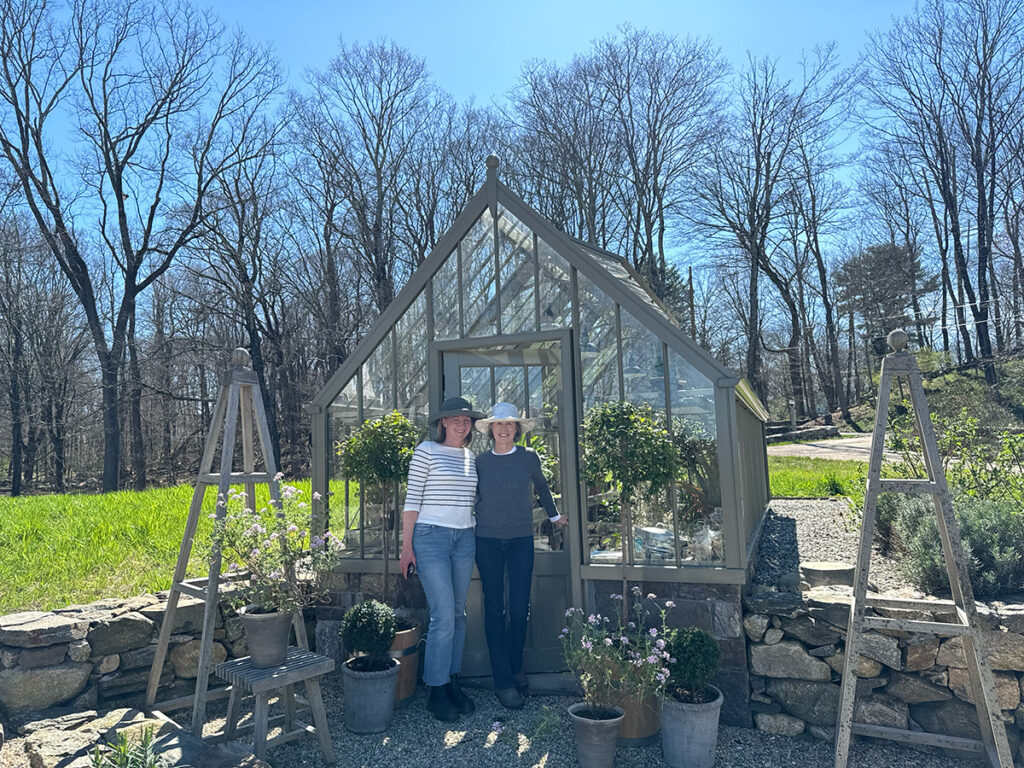
Spunberg (left) and Needham stand in front of Needham’s greenhouse. The two do extensive research of the native flora for each project, reading extensively, walking in local parks to see what’s growing and where, and studying the conditions of the property before coming up with a plant palette.
Make a Grand Entrance
When Hurricane Sandy knocked down the hemlocks lining the road in front of her house (luckily, they fell away from the house and not on it), Needham turned a disaster into an opportunity to redesign the entry. The original driveway had people driving “practically into the house,” she said. She re-sited it to orchestrate the view towards the Mianus River Gorge vista—the connection to the larger landscape. She then mixed in native plants along both sides of the driveway to provide a welcoming greeting to visitors—and to wildlife.
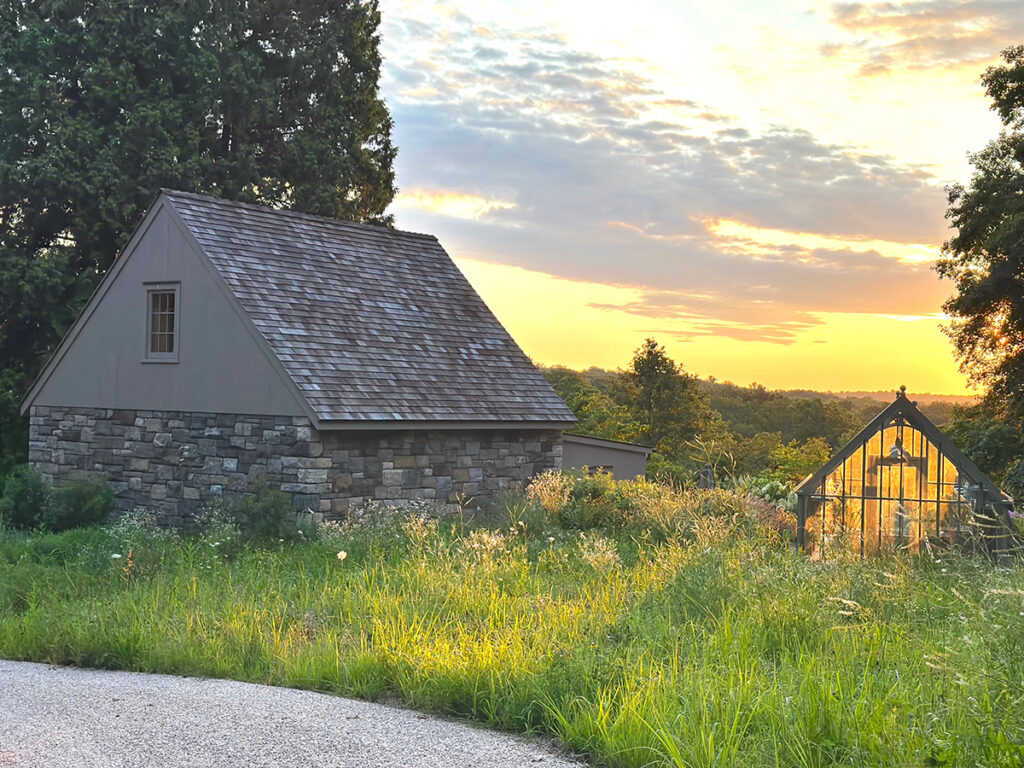
Grow a Green Mulch
Why buy and truck in wood chip mulch from far away, every year, when native plants will suppress weeds, retain moisture, cover bare patches, provide homes or “soft landings” for native insects and wildlife, and look drop-down gorgeous while doing so? “We are working hard to use a thickly planted palette in garden beds and under trees,” Needham says. Once they’re established, they will take care of themselves.
At Needham’s house, she underplanted a native dogwood (Cornus florida) with yellow golden groundsel (Packera aurea), blue woodland phlox (Phlox divaricata), and white cultivar P. divarciata ‘May Breeze’, creating a soft landing for native insects. Oakleaf hydrangea, in the distance, will bloom later in the summer.
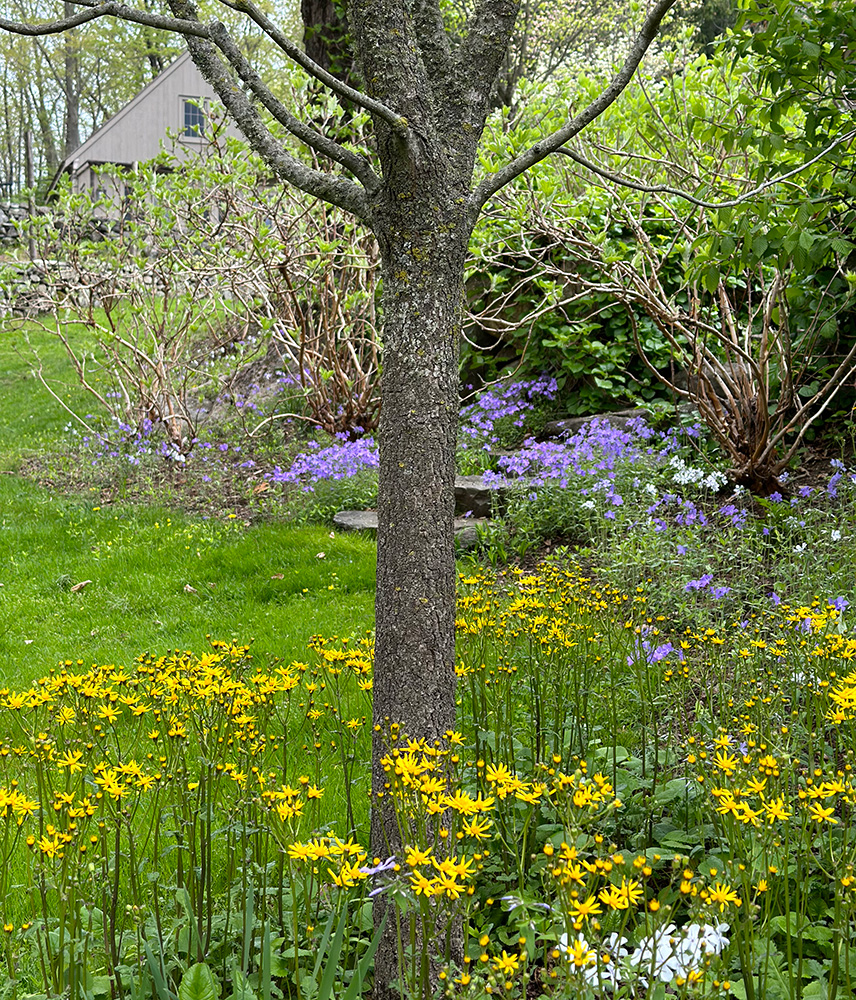
Reduce Run-off
At a client’s property, Needham and Spunberg designed a swale, a low or depressed area that absorbs excess water flowing from the property. With our increasing number of intense storms, having planted areas that will absorb water is key. They reworked the slope, crafting a rock riverbed for the water to stream through. “We then developed a mix of native plants adapted to varying moisture levels in the swale,”
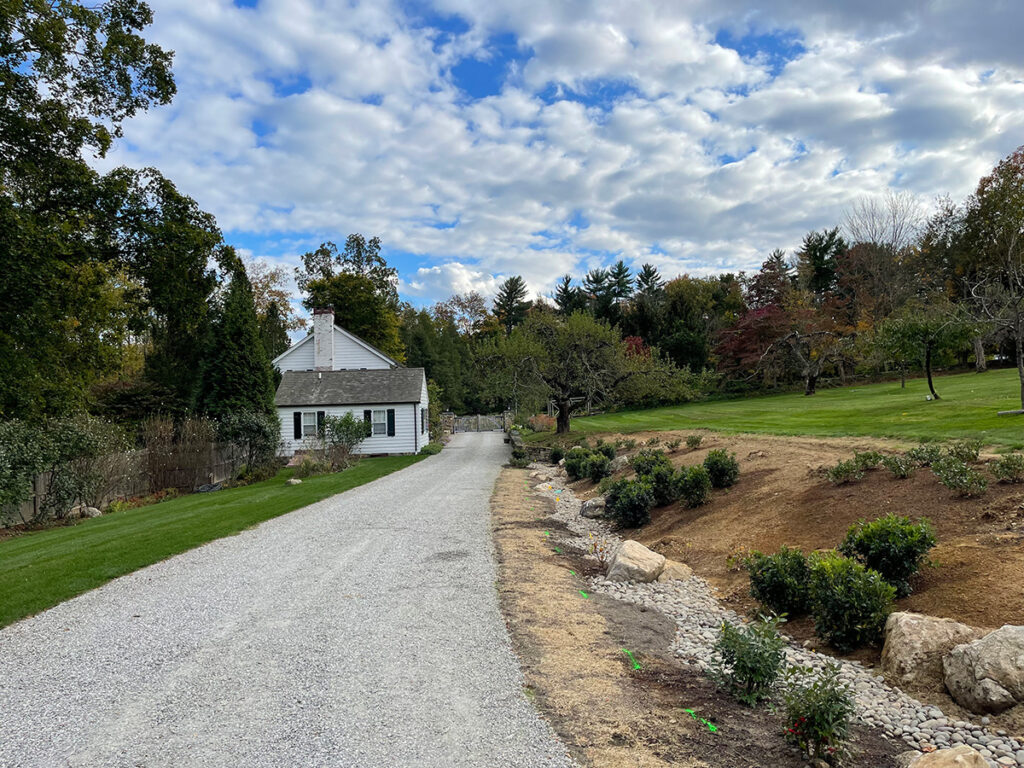
To provide structure in the swale, Needham and Spunberg placed moisture-loving native shrubs like fragrant summersweet (Clethra alnifolia), fruiting chokeberry or Aronia, and red-berried winterberry (IIex verticillata), before filling in with perennials.
Needham explains. At the base of the swale, where water collects, they planted varieties that liked wet feet, including fox sedge (Carex vulpinoidea), northern blue flag iris (Iris versicolor), and swamp milkweed (Asclepias incarnata). For the upper part of the slope, which receives less water, they opted for dry adapted meadow plants, such as lavender hyssop (Agastache foeniculum) and ironweed (Vernonia lettermanii ‘Iron Butterfly’). Their goal was to “make it a four-season beauty,” says Needham. Success.
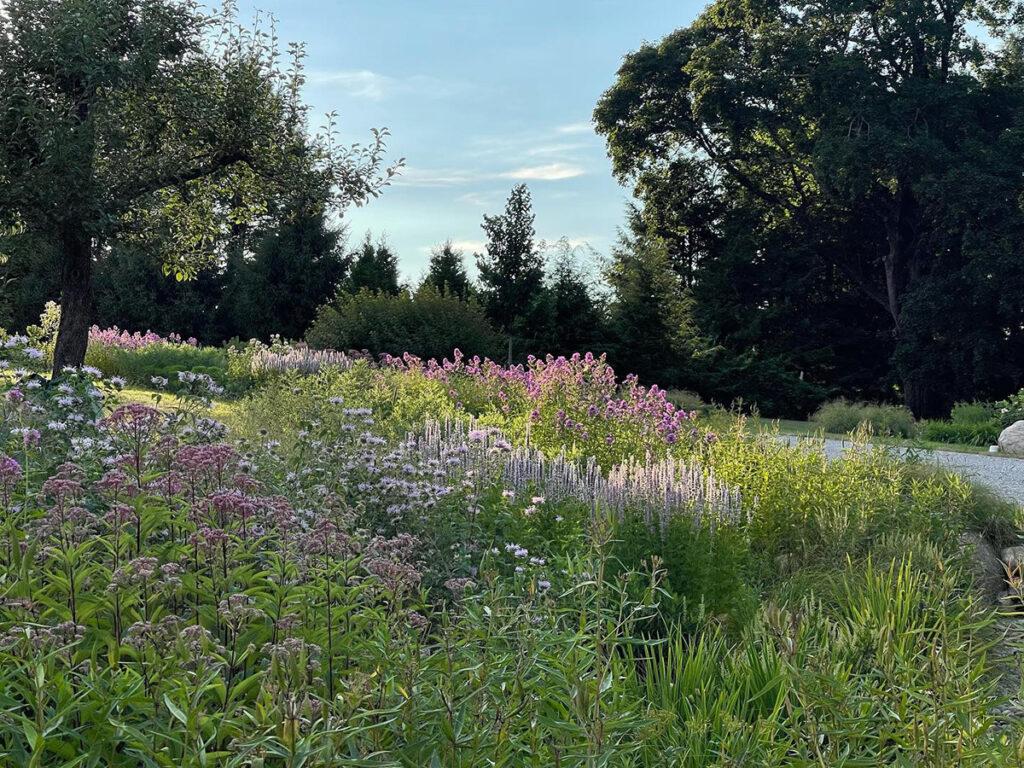
Shrink your Lawn
Think of your lawn, which truth be told is a horticultural wasteland, as an invitation to create a horticultural wonderland. In their orchard below the house, Needham and her husband John did just that. They stopped mowing, removed mugwort and other invasives, and started filling in with native plugs. Plants like wild bergamot (Monarda fistulosa), golden groundsel (Packera aurea), and mountain mint (Pycanthemum muticum) stand up well to invasive pressures, suppressing new weeds from taking hold. Today the meadow thrives and with it comes countless birds—orioles, bluebirds, finches—, moths and butterflies, and wildlife, including foxes and a bobcat.
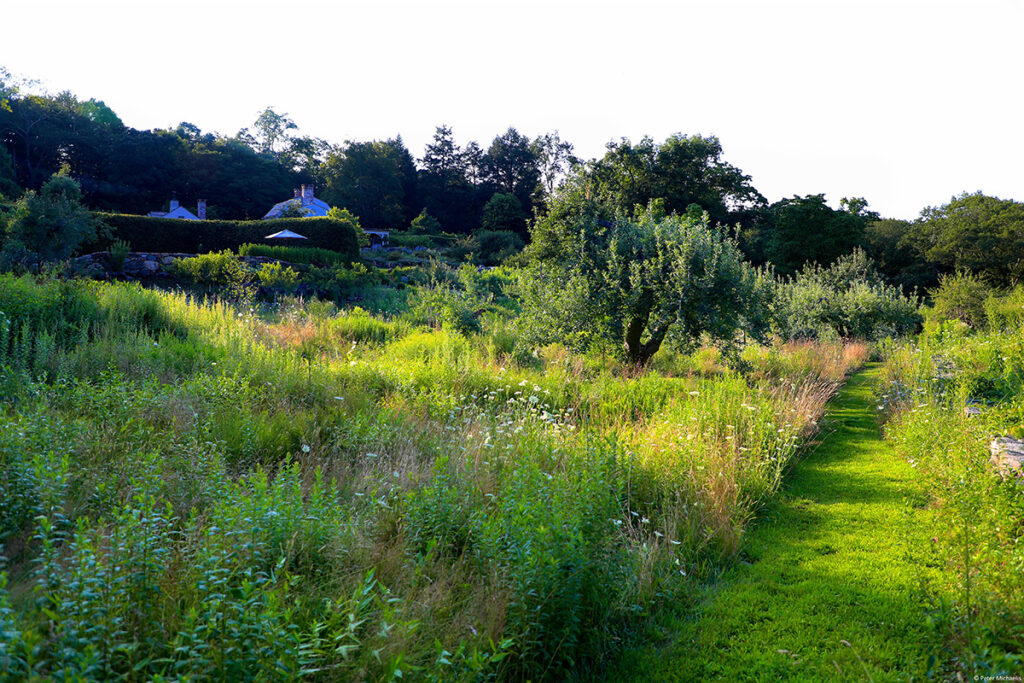
While she and John didn’t need convincing to reduce their lawn, Needham and Spunberg’s clients sometimes do. They are careful how they present the master plans they create. “We’ll say, ‘this will be a lower maintenance garden,’ rather than ‘we see lots of opportunities to get rid of your lawn,” says Spunberg. “We then show them such provocative pictures they can’t turn it down,” says Needham with a laugh.
Remove Invasive Species
Getting rid of invasive plants can feel like a Sisyphean task at first, but it’s a vital one. We’ve lost three billion birds since 1970 and 40% of our insects are suffering decline. Invasive plants contribute to habitat loss by crowding out native species, which provide food and shelter.
At a client’s house, garlic mustard had taken over the woodland’s understory. The first order of business was to remove it. (Studies indicate that garlic mustard is allelopathic, meaning it releases chemicals in the soil that prevents other plants from growing, and thought to harm soil fungi. Thankfully, it’s easy to pull by hand, especially after rain.) The next step was to fill the space with plugs of native woodland flowers and groundcovers of ferns and sedges. “Our goal was to nestle the cottage in swaths of native woodland plants that would bring in insects and eliminate the need to constantly cut weeds and mow,” explains Needham.
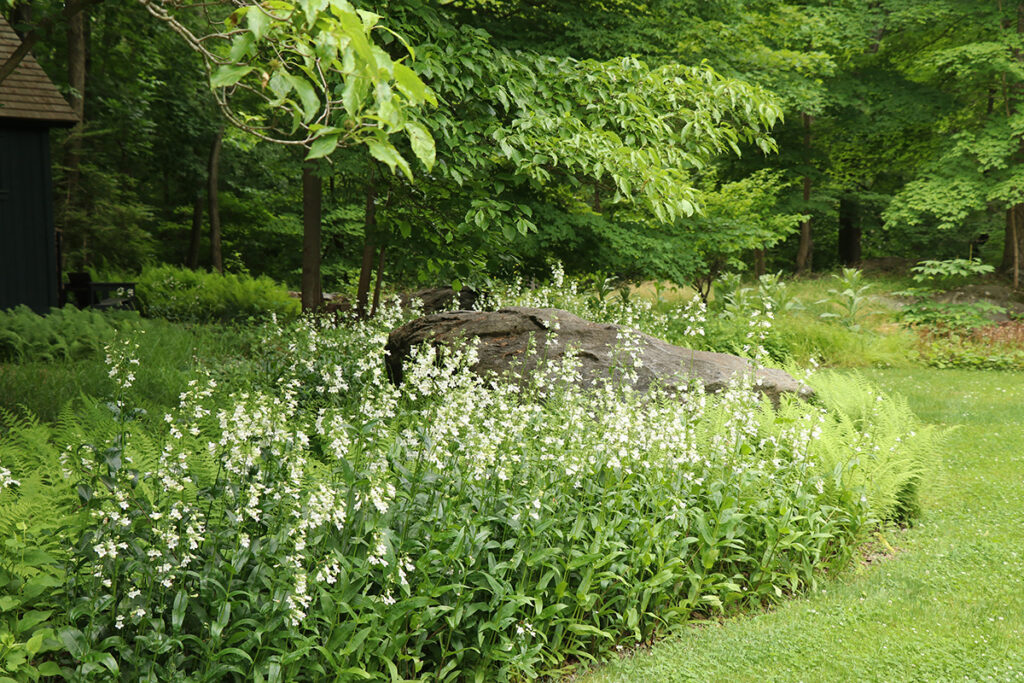
At Needham’s own garden, her husband John has made it his mission to tackle the invasives. After successfully digging up mugwort from the woodland—no small feat—he reaped the reward when this spring native spring ephemerals including trout lilies, bloodroot, and trillium, returned in abundance.
Provide Food for Biodiversity
“Don’t fret about insects eating leaves,” says Needham. “If you want birds, you need insects. And if you want insects, you need native plants,” says Spunberg. We need to learn to share our gardens with wildlife. They live here too. As Perfect Earth Founder Edwina von Gal advises, “Follow the 10-step program. Take 10 steps back and you won’t notice any nibbled leaves.”
Reuse and Renew
After spending much of the pandemic at home with their three adult daughters, the Needhams decided they needed more space. They built a barn using wood they had milled from ash trees destroyed by the Emerald Ash Borer and stones they found on the property for the foundation. They sited the barn and a new greenhouse along the drive to help focus the view, surrounding the structures with mostly natives to create a seamless connection to the Mianus River Gorge.
To prevent waste, the couple also tries to keep as much biomass on the property as possible. They leave the leaves, build habitat piles in the woodland from branches, and craft benches and bridges in the woodland from fallen trees.
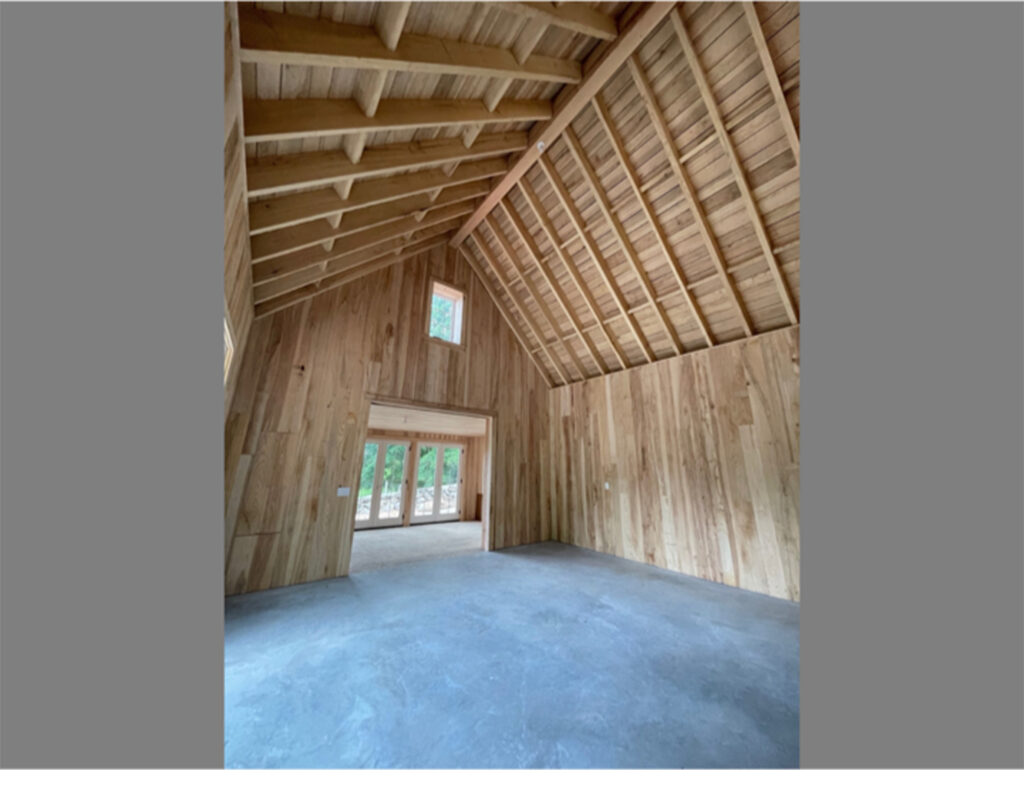
The Emerald Ash Borer has been decimating ash trees in the Midwest and Northeast and is spreading quickly. According to the Arbor Day Foundation, the invasive insect has destroyed 40 million ash trees in just the state of Michigan. Leslie and her husband John took ash trees, destroyed by the Emerald Ash Borer, milled them, and instead of trucking them off the property, they repurposed them to erect this barn.
by Melissa Ozawa
This is part of a series with Gardenista, which ran on May 8, 2024.
